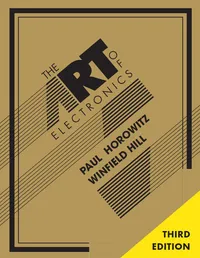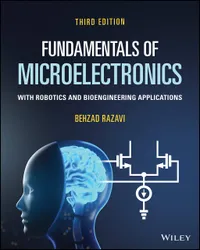EE3300/EE5300 Electronics Applications Subject Information
Overview
This subject uses a 7-week block mode format. There are 6 weeks of classes and the final week is for assessment. It is expected that you can devote approximately 18 hours per week to this subject.
The subject is designed around a series of practical projects. The practicals should be viewed as the central priority of the subject. The intent is for you to develop your understanding of electronics by building and testing circuits. The associated theory is presented so that you can understand what you’re building and how it works.
The weekly schedule is illustrated in Figure 1. You must begin each week by studying the course material. There are no traditional lectures. Don’t come to the classes unprepared. We’ll use the workshops to discuss the material and practice analysis and design.
The labs are the heart of the subject. Each week you have a mini-project or a set of exercises to complete. You should get started on the project in the first scheduled class, then continue in your own time, and finally demonstrate completion of the activity in the final session.
Weekly organisation of the subject.
Zoom:Learning activities and assessment
As much as possible, all assessment items in this subject will follow this sequence:
- You will complete the task.
- The teaching staff will review your work. If necessary, you will be provided with feedback on how to improve.
- In response to the feedback, you will revise your work.
- This process will repeat until you have demonstrated mastery of the task.
This approach is intended to encourage you to focus on learning and improvement.
Assessment overview
There are three assessment items in this subject:
- Quiz 1 (15%).
- Quiz 2 (25%).
- Portfolio, containing practical work and a design project (60%).
Assessment of quizzes
There are two quizzes in this subject, to be held during the workshop sessions in weeks 3 and 5. The quiz questions will be similar to the tutorial questions.
The quizzes are intended to require 1 hour to complete, but you will be allowed 2 hours, to accommodate any students who need extra time. It is intended that the extra time will meet most AccessAbility requirements. Formal documentation is not required if your needs can be met by this arrangement.
In addition to the numeric score obtained under the exam conditions, the quizzes will also be marked as “complete” or “not yet complete”. A quiz is considered “complete” if you have correctly answered at least 80% of the questions, or you demonstrate a good understanding of all questions (i.e. you made only minor errors such as mathematical mistakes). If you did not correctly answer 80% of the questions, then you will be given feedback and a chance to re-do the questions in your own time under assignment conditions.
Inability to complete a question during an invigilated quiz is clear evidence of what you need to work on. A deficiency in traditional exams is that most students barely look at their mistakes, let alone learn from them. We hope to rectify that by allowing you to take the question away, read up on the topic, and learn how to answer it correctly. To ensure academic integrity (i.e. to ensure that you did the work yourself), you will be asked to explain your revised quiz solution when you show it to teaching staff. You must be able to justify and explain what you have written down. If your explanation is not satisfactory, then you will need to do further study and come back later to try again.
To pass the subject, you must have both quizzes marked as “complete”. You can see in the LearnJCU gradebook whether you have successfully “completed” each quiz.
Assessment of practicals
Practical work contributes towards your portfolio. When you submit your portfolio, you will be required to self-assess your practical work and comment on the number of practicals that you were able to complete.
During each practical session, you will be provided with formative feedback on your work. Each week there are specific requirements to be met. Once you have completed the requirements, your tutor will record your practical completion in the LearnJCU gradebook. To check that you did the work yourself, you will be required to explain your circuit to the tutor, and be able to answer questions about it.
It is generally expected that you should complete the practical within the week in which it is assigned. However, if necessary, you can also show the finished task to the teaching staff in a following week. The final deadline for practical completion is when you submit your portfolio in week 7.
Assessment of the design project
You will self-assess your achievements in the design project, and write an evidence-based justification of your assessment in your portfolio. It is important that you discuss this with teaching staff as you progress through the project. You can receive feedback as many times as needed in the lead-up to the final due date.
Portfolio grade determination
As part of your portfolio submission, you will request the letter grade (e.g. HD, D, C, P or F) that you believe is justified based on your achievements and the context of those achievements. To help calibrate your grade request, there is a table on the portfolio page with indicative criteria for each grade.
The idea is for you to genuinely self-assess and take responsibility for your progress. Ask yourself what grade you would like to achieve in this subject and work towards that. You are highly encouraged to discuss your progress and grade expectations with the subject coordinator throughout the study period. It is intended that this approach will empower you to take control and ownership of your learning.
The subject coordinator will review your portfolio. If your self-assigned grade is justified, then the subject coordinator will assign a numeric score within the range for your chosen grade. For example, if you request a D and justify it appropriately, then you will be assigned a numeric score within the range of 75% to 84%. That numeric score will contribute to your overall subject grade, alongside the quiz scores.
Do you mean that I can just give myself a HD?
Your self-assigned grade will be adopted if it is justified.
The subject coordinator reserves the right to overrule your grade if you are being unreasonable. If in doubt, discuss with teaching staff. Grading should be a conversation.
Required material
Prescribed textbook
You will require access to the following textbook for this subject:

The prescribed book is The Art of Electronics by Paul Horowitz and Winfield Hill, 3rd edition. This is a classic reference book with many practical circuit design examples. In this subject, we will refer to this book as “AoE”.
If you intend to pursue a career in electronics, then I highly recommend that you buy a hard copy of this book. You will continue to refer to it for circuit design inspiration.
You can also access a hard copy through the JCU library, or find PDF copies online.
Reference book

Fundamentals of Microelectronics by Behzad Razavi is the reference book for this subject. If you’re looking for more detailed explanations written in a textbook style, then I encourage you to refer to this book. It is available through the library.
Many of our tutorial questions are drawn from the second edition of this book. Sadly, tutorial questions changed for the third edition. Please see the specific questions linked on each tutorial sheet.